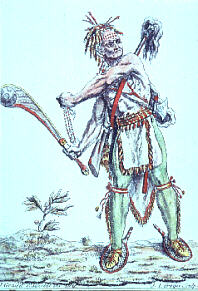

ABOUT NAMES:
One of the questions most frequently asked of archaeologists who study Ontario's prehistoric past is, "to which tribe did these people belong?"
The names used by archaeologists to describe and sort evidence of past peoples do not represent tribal names or specific cultures. Names such as "Point Peninsula" or "Blackduck" are simply used to describe the people who left behind collections of artifacts, distinct from those left by other peoples and other times. Apart from in very rare cases, it is not possible to associate a particular archaeological 'culture', 'tradition' or 'complex' with a specific tribe. Throughout the long span of prehistory, the people that lived in this province certainly had names for themselves. Unfortunately, these names are lost to us.
Throughout the text of this program you will find frequent references to 'Iroquoian' , 'Algonkian' or 'Siouan' people. These are not tribal names, but indicate that the people being discussed spoke a language belonging to the 'Iroquoian' , 'Algonkian' or 'Siouan' family of languages.
People who spoke Iroquoian Languages: Huron, Petun, Neutral, St. Lawrence Iroquois, Five Nations (Seneca, Cayuga, Oneida, Onondaga, Mohawk)
People who spoke Algonkian Languages: Ojibwa, Ottawa, Cree, Algonquin, Nipissings, Blackduck, Selkirk, Western Basin?
People who spoke Siouan Languages: Sandy Lake
People from the prehistoric past have left relatively little behind for us to study. Many of the things they held precious - their thoughts, feelings, relationships and beliefs are largely inaccessible to us. You will soon notice that much of the information within the program is about the decorations of pottery vessels, the shapes of arrowheads (called here 'projectile points' - since we don't always know their actual function) and how people buried their dead. These are the things which are available to archaeologists, and which enable them to develop their ideas on what happened in the past.
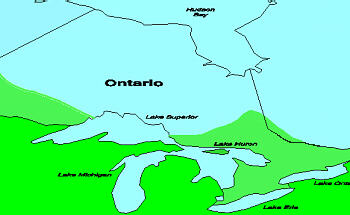
The story of the human occupation of Ontario begins about 11,000 years ago. For the previous million years, the whole of Ontario had been covered by glacial ice. As this began to melt back, people followed the receding ice front, preying on the game which, in turn, had been attracted by the lush vegetation on the newly exposed land.
People had already been living in North America for thousands of years. How long is still not known for certain. Some researchers suggest the earliest migrants to this continent crossed from Asia 25,000 years ago. Others suggest the first migrations occurred as much as 40,000 years ago.
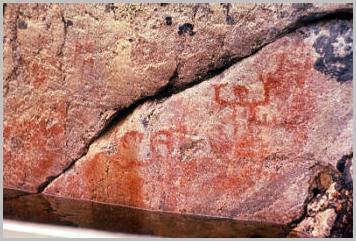
At first movement north into Ontario was little more than a trickle. Some archaeologists estimate that during the first two or three thousand years the population of the whole province was less than two hundred people. Archaeologists have called these first people Palaeo-Indians (meaning 'old' or 'ancient' Indians). The PALAEO-INDIAN PERIOD is estimated to have begun (in Ontario) about 11,000 years ago, and lasted for approximately 1,500 years (longer in northern Ontario). These people may have hunted migrating herds of caribou along the shores of vast glacial lakes. They have left little evidence of their passing, except for a few beautifully made lance-shaped spear-points, and some campsites and places where they made their tools.
THE ARCHAIC PERIOD
As the glacial ice continued to recede, the climate gradually became milder and more land became available for exploration and occupation. The Archaic Period spans the long time between the end of the Palaeo-Indian Period and the beginning of the use of pottery in Ontario. During the 6,500 years of the ARCHAIC PERIOD the exquisite stone tool workmanship of the Palaeo-Indian period was slowly abandoned. Archaic spear-points rarely reach the quality of workmanship of those of their forebears and are made from a greater variety of rocks. However, Archaic people began to make a wide variety of axes, hammers and other tools by pecking and grinding rocks to the desired shape.
Some of these were used for wood working, others were used to process wild plant foods such as nuts and berries. During the later part of the period, Archaic people also made a variety of highly polished stone tools. Some of these may have been simply decorative - others may have been used as counterweights for spear-throwers. These technological changes show that Archaic people slowly modified their lives and equipment to help them cope with the changing world within which they lived.
THE EARLY WOODLAND PERIOD
Some time around 1000 B.C. the idea of using fired clay to make pottery containers began to spread into Ontario. This technology probably had little impact on the people of this province, however it is of enormous importance to archaeologists because although pots readily break in use, the broken pieces tend to last extremely well in the ground.
All over the world potters have found the semi-hard clay surface of freshly shaped pots (ie. before firing) to be an irresistible canvas for decoration and art. Since fashions and design preferences gradually change through time and from one people to another, the patterns of pottery decoration, and even the shape of the pots themselves provide valuable and accurate clues to the age and culture of the people who made them.
The Early Woodland people of Ontario were the first to use pottery in this province. In may other respects, people of the EARLY WOODLAND PERIOD (c. 900 B.C. - A.D. 0) continued to live in much the same way as their predecessors of the Late Archaic. Like the Late Archaic people, they buried their dead with great ceremony, often including attractive and exotic artifacts in the graves. The Early Woodland people of Ontario appear to have been in contact with, or at least heavily influenced by their neighbours to the south - particularly the Adena people of the Ohio Valley.
So far no true Early Woodland tradition has been discovered in northern Ontario. The introduction of pottery into that part of the province does not seem to have occurred until much later.

The most distinctive way in which the Middle Woodland period (c. 300 B.C. - A.D. 900) differs from the Early Woodland is in the way the people of Ontario had broadened the methods they used to decorate their pots. Changes in the shapes and types of tools used, the raw materials chosen and the ways in which these were acquired and traded are also apparent. However, these subtle technological changes mask more fundamental differences. Evidence from numerous archaeological sites indicates that by the MIDDLE WOODLAND PERIOD the people of Ontario began to identify with specific regions of the province. The artifacts from Middle Woodland period sites in southwestern Ontario differ quite noticeably, for instance, from those of the people in eastern Ontario. For the first time it is possible to distinguish regional cultural traditions - sets of characteristics which are unique to a part of the province. Archaeologists have named these cultural traditions LAUREL (throughout northern Ontario), POINT PENINSULA (in eastern and south-central Ontario), SAUGEEN (in much of southwestern Ontario) and COUTURE (in extreme southwestern Ontario).
Archaeologists have developed a picture of the seasonal patterns these people used in order to exploit the wide variety of resources in their home territories. During the spring, summer and fall groups of people congregated at lakeshore sites to fish, collect shellfish (in the south) and hunt in the surrounding forests. As the seasons progressed the emphasis probably shifted away from fishing and more towards hunting, as the need to store up large quantities of food for the winter became more pressing. By late fall, or early winter, the community would split into small family hunting groups and each would return to a 'family' hunting area inland to await the return of spring.
Some Middle Woodland people may have been influenced by a vigorous culture to the south - the Hopewell. These people buried some of their dead in specially prepared burial mounds, and accompanied the bodies with many and varied objects. Some Ontario people, especially those in the Rice Lake and Rainy River areas adopted this practice, although tailored it to suit their local needs. Some archaeologists have argued that since not all people were buried in the same way, these rich burials indicate that a heirachy or class structure was beginning to develop.
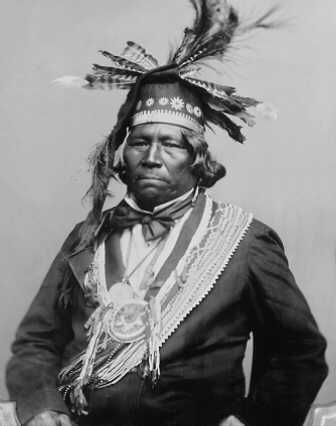
The easiest way for archaeologists to distinguish Late Woodland period archaeological sites from earlier Middle Woodland sites is by looking at the pottery. During the Middle Woodland period the people made conical based pottery vessels by the coil method and decorated them with various forms of stamps. By the beginning of the LATE WOODLAND (ie. by A.D. 900) period the coil method had been abandoned in favour of the paddle and anvil method, and the vessels were decorated with 'cord-wrapped stick' decoration. While these transitions are useful to archaeologists they provide only a hint to the more fundamental changes which were occurring at this time.
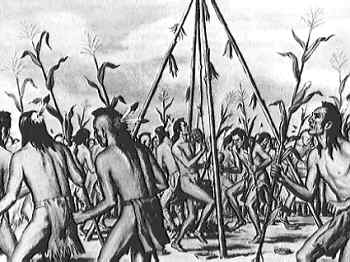
Sometime after A.D. 500, maize (corn) was introduced into southern Ontario from the south. Initially this cultivated plant had little effect on the lives of people living in Ontario, but as the centuries past, cultivation of corn, beans, squash, sunflowers and tobacco gained increasingly in importance. Not surprisingly, this transition from an economy based on the products of the lake and forest, to one in which the sowing, tending and harvesting of crops was important, also hastened cultural and technological changes.
Initially at least, the changes were small. People were naturally conservative, and the risks of crop failure must have been too high to allow for too much reliance on the products of the field. Some re-orientation of the seasonal movements of these people must have occurred at this time. Fishing and hunting sites continued to be used although the pattern of summer gathering along the shores of the major lakes of the region probably diminished. The small plots of cultigens would have needed to be tended and harvested during the summer. Gradually however, the settlements adjacent to the corn fields began to take on a greater permanency as cultigens became more of a staple food. The best quality, light, and easily tillable farmland was sought out for cultivation, with village sites located nearby, near a reliable source of water.
As agricultural success increased, it became possible to store a supply of food for the winter. For the first time it was possible to to stay in and around the village all year instead of dispersing into family winter hunting camps. Villages became larger and more heavily populated. Hostilities erupted between neighbouring peoples, so that by A.D. 1000, some people thought it necessary to defend their villages with stockades and ditch defences. By the end of the Late Woodland period, the people of southern Ontario had grouped themselves into distinct regional populations separated by vast, unoccupied areas of 'no-mans-land'.
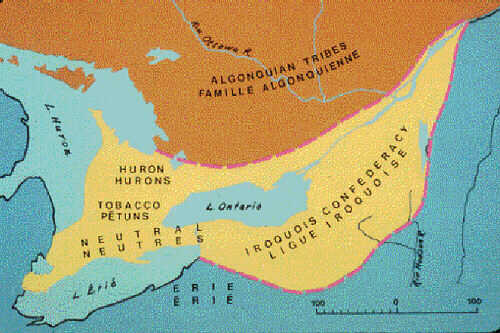
The development of agriculture in southern Ontario had little impact on northern Ontario people at first. Late Woodland people of northern Ontario continued to live much as their Middle Woodland and Shield Archaic forebears had. They adopted many of the technological changes seen in the south, but applied them to a way of life which was successfully adapted to the rigorous northern climate.
